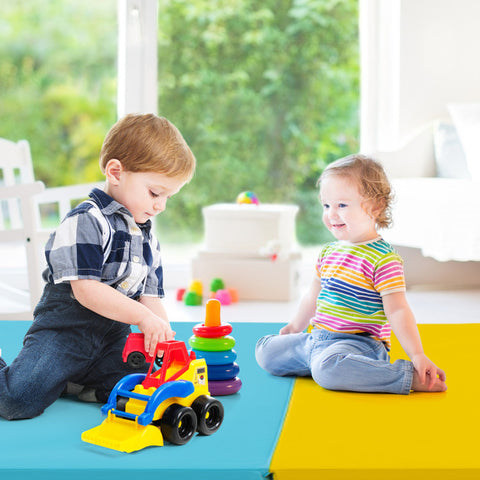News
How Weather and Temperature Affect Gymnastics Mats: What You Should Know
When investing in a quality gymnastics mat, most people consider thickness, material, and size—but often overlook how weather and temperature can impact mat durability and performance. Especially for outdoor use or unheated practice spaces like garages and basements, understanding how climate affects gymnastics mats is essential for safety and longevity. Within the first 100 words, it’s clear: environmental conditions like humidity, extreme cold, or heat can significantly change how your mat functions.

The Impact of Temperature on Mat Performance
Cold Temperatures:
Low temperatures can cause PVC and vinyl surfaces to become stiff or even brittle over time. Foam cores—especially polyethylene foam—can harden, reducing shock absorption. This can lead to increased injury risk during practice.
Hot Temperatures:
Excessive heat, especially in garages or outdoor setups, can soften foam and degrade adhesives in layered mats. It may also cause vinyl surfaces to warp or bubble, leading to uneven practice surfaces.
TIP: Always check the mat’s recommended temperature range, usually available in the product manual or manufacturer’s website.
How Humidity Affects Gymnastics Mats
High Humidity:
In humid environments, moisture can seep into foam if the outer cover isn’t completely sealed. This encourages mold and mildew growth—especially in older mats or poorly stored ones. Humidity also weakens stitching and may cause slipping on slick vinyl surfaces.
Low Humidity:
Very dry environments can cause vinyl covers to crack and foam interiors to dry out, reducing the mat’s flexibility and comfort.
Storing Mats Properly by Season
Summer:
Store mats in cool, shaded areas away from direct sunlight. Use breathable covers to prevent heat buildup and moisture retention.
Winter:
Avoid placing mats directly on cold cement floors. Instead, raise them slightly to reduce cold transfer, or store indoors to preserve foam flexibility.
TIP: Never fold or roll a mat that has frozen—let it warm gradually at room temperature first to prevent cracking.
Outdoor Use: What to Consider
If you practice gymnastics outdoors, use mats designed specifically for outdoor conditions. Look for:
-
UV-resistant covers
-
Water-resistant or sealed seams
-
Non-slip bottoms even in damp conditions
Regular indoor mats are not meant for wet grass, concrete, or sun exposure and may degrade quickly without proper care.
How to Tell If Your Mat Has Climate Damage
Signs your mat may be suffering from temperature or weather damage include:
-
Warped edges or bubbling
-
Cracked vinyl surface
-
Foam that feels unusually hard or soft
-
Musty odor or visible mold spots
-
Slippery surface due to material breakdown
Conclusion: Protecting Your Gymnastics Mat From the Elements
In the final 100 words, remember that weather and temperature conditions play a crucial role in your gymnastics mat’s longevity and safety. Whether you’re training in a backyard, unheated garage, or humid basement, it’s important to choose mats suited for those environments—and store them properly. By understanding how climate affects materials, you can avoid damage, maintain performance, and ensure safety over time.

